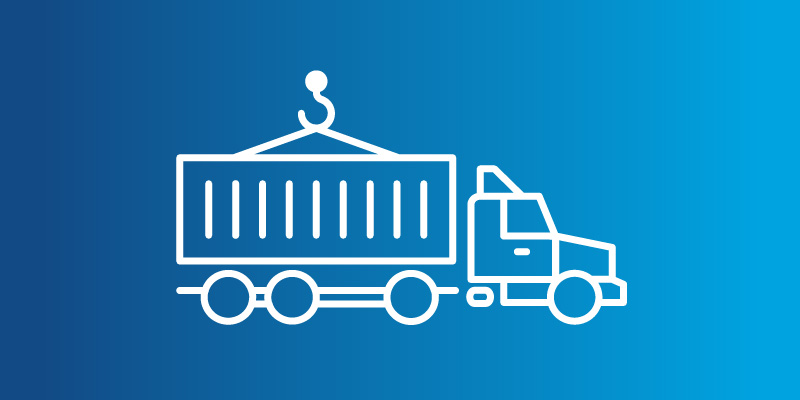Ship with confidence—trust a leading ocean freight forwarder

Reliable options for all your needs
Full container load (FCL)
Filled a shipping container? We’ll coordinate the movement of your goods based on your timing and budget goals.
Less than container load (LCL)
For your smaller ocean freight shipments, choose from our LCL services at major ports to ensure your LCL sea freight deadlines are met.
Buyer's consolidation
Increase your capacity options—we’ll combine and palletize your cargo with different manufacturers and load it into dedicated full-load containers.
Coastal shipping
Save up to 60% from your transportation budget with domestic coastal shipping in Australia. It’s your natural choice over air, road, and rail service.
Marine cargo insurance
Explore your all-risk policy choices—including transactional coverage and annual policies—to ensure your cargo insurance matches your exposure risk.
Fast-track opportunities for urgent timelines
Expedited FCL Services TAWB
Quickly move along the Trans-Atlantic Westbound (TAWB) lane—from major ports in Europe to the United States.
Expedited FCL Services TPEB
Deliver cargo from Asia to the United States on the Trans-Pacific Eastbound (TPEB) lane via one of the fastest ocean service.
Expedited LCL
Achieve the perfect balance between cost and speed—even when your freight doesn’t fill a container.
What sets C.H. Robinson ocean freight services apart
content.testimonialHeading
Get the latest intel. Own the competition.
The C.H. Robinson Edge delivers expert advice on what’s new, what’s next, and what to do about it. With the leading freight market insights, powered by unmatched expertise and data of the market leader, you can stay ahead in today’s fast-changing world economy—where supply chains can make or break business success.
Frequently asked questions
Overview
Q: What is sea freight shipping?
Sea freight shipping, also known as ocean freight, is the transportation of goods across the ocean by cargo ships. It involves loading cargo (often in standardized shipping containers) onto large vessels that sail between ports. Ocean freight shipping is known for being:
- Cost effective for bulk goods: Ships can carry thousands of tons, so the cost per unit (per kilogram or cubic meter) is much lower than other modes for long-distance shipments. For example, ocean freight might cost around $0.50 per kg versus $4–6 per kg by air.
- Ideal for high capacity: A single container ship can move enormous volumes—roughly 90% of world trade travels by sea—making it ideal for heavy or oversized cargo that can’t go by air.
- A slower transit option: Ocean freight is slower than air freight (often taking several weeks for intercontinental shipments), so it’s best for non-urgent goods where low cost is a higher priority than speed.
Q: What are the benefits of sea freight shipping?
Sea freight offers several advantages for global shippers, primarily centered on cost and capacity. It is generally the most budget-friendly option for international transport, especially for large shipments.
- Low shipping costs: Ocean freight typically has the lowest cost per pound or cubic foot. Shipping by sea is widely known as a cost-effective solution for moving goods internationally.
- Large shipping volumes: With ocean shipping it’s possible to transport full containers of goods (or even entire industrial machines) in one shipment. This high capacity means you can move bulk cargo or oversized items that would be impractical by air.
- Extensive global reach: Sea freight connects virtually every continent via global port networks. Even landlocked areas can be served through multimodal connections, making ocean shipping a backbone of global trade logistics.
- Eco-efficient option: Per ton of cargo, ocean shipping has a far lower carbon footprint than air or truck. Cargo ships only emit about 10–40 grams of CO₂ per ton-kilometer, compared to roughly 500 grams by air, making sea freight a more sustainable choice for the environment.
Q: Is sea freight a sustainable mode of transport?
Yes. Sea freight is considered one of the most sustainable freight transport modes for long distances. Ships emit only a fraction of the CO₂ per ton-kilometer compared to trucks or planes, thanks to economies of scale.
- Lower carbon footprint: Ocean vessels move massive amounts of cargo with relatively low emissions. For the same distance, air freight can produce 20–50 times more CO₂ per ton than ocean freight. This means shipping by sea greatly reduces greenhouse gas emissions for heavy shipments.
- Efficiencies of scale: A single container ship can carry thousands of containers in one voyage. By maximizing cargo per trip, fuel use and emissions per unit of cargo stay low.
- Greener initiatives: The industry is further improving sustainability by adopting cleaner fuels (e.g., low-sulfur fuel, LNG) and more efficient ship designs. Many carriers (e.g., via sustainable marine fuel programs) are also investing in carbon reduction measures to make ocean freight even more eco-friendly.
Sea service options
Q: What is FCL shipping?
Full container load (FCL) shipping means your cargo occupies an entire shipping container by itself. In FCL, a 20-ft or 40-ft container is filled by one shipper’s goods exclusively, not shared with others as experienced with less than container load (LCL) shipping.
- Exclusive use of a container: Your freight is the only cargo in the container. This reduces handling and keeps the shipment sealed from origin to destination, enhancing security.
- Best for large shipments: FCL is ideal when you have enough cargo to fill most or all of a container. It often becomes more economical at scale, as the cost per unit is lower if you can utilize a full container’s capacity.
- Faster transit with less handling: Since no consolidation is needed, FCL shipments typically move directly and can have shorter transit times (and fewer touchpoints) than comparable LCL shipments.
Q: What is LCL shipping?
Less than container load (LCL) shipping means your goods share a container with other shippers’ cargo. If you don’t have enough volume for a full container load (FCL), an LCL shipment lets you pay only for the space you use while the freight forwarder consolidates multiple shipments in one container.
- Shared container service: Your shipment is combined with others in a single container, so you split the container space and cost. Each shipper pays for their cargo’s volume, making it budget-friendly for smaller loads.
- Cost-efficient for small volumes: LCL allows you to access low ocean freight rates without needing high volume. Instead of waiting until you can fill a whole container, you can ship 1–2 pallets or a few cubic meters as needed.
- Flexible but slightly slower: LCL shipments might have additional handling (consolidation at origin and deconsolidation at destination), which can add a bit of transit time or handling risk compared to FCL. However, it provides great flexibility for businesses with moderate shipment sizes.
Q: What is FAK shipping?
Freight of all kinds (FAK) is a pricing strategy used when multiple products with different classes are transported as a single freight rate. Essentially, FAK allows various product types to be treated as if they are one “generic” cargo for billing purposes. It can only be used for standard, dry cargo. FAK is not applicable for refrigerated or specialized, oversized goods.
- Single rate for diverse cargo: Instead of assigning different freight classes or rates to each product in a shipment, FAK groups them together. The carrier charges one flat rate for the entire shipment, simplifying the rate structure.
- Cost and convenience: Shippers use FAK agreements to save on costs when shipping loads of mixed commodities. It simplifies the tariff rate and can result in a better overall rate, since higher-class (more expensive) items ride at the lower freight rate of the mix.
- Common in LTL, LCL, and forwarding: FAK is frequently used by freight forwarders and carriers in less than truckload (LTL) or less than container (LCL) shipments. By negotiating FAK rates, logistics providers can bundle multiple items or customers’ goods and optimize container or trailer space without complex rating for each item.
Q: What is a buyer consolidation service?
Buyer consolidation (freight consolidation) is a service that combines multiple orders or shipments from different suppliers into one larger shipment for a single buyer. Instead of shipping many loose less than container (LCL) loads, a forwarder consolidates them at origin so they can be sent together in a full container to the destination.
- Bundling shipments: Orders from multiple suppliers or origins are grouped into one full container load (FCL) under a buyer’s name. This way, the buyer receives a single combined shipment instead of many smaller ones.
- Lower overall costs: By increasing the load factor of containers, buyer consolidation helps reduce total shipping cost per unit. You avoid paying for several partially filled containers and instead ship one full container, leveraging better volume rates and fewer handling fees.
- Streamlined supply chain: Consolidation means fewer individual shipments to manage. This can lead to simpler customs clearance (one entry instead of many) and reduced risk of shipment delays or discrepancies since everything arrives together.
- Strategic planning required: It’s important to coordinate shipment readiness among all suppliers. Effective timing and planning help avoid potential delays and unnecessary storage fees.
Q: What is coastal shipping?
Coastal shipping is the use of ships to transport cargo along a country’s coast (between domestic ports) as an alternative to land transport. For example, in Australia shippers can move goods from the east coast to the west coast by sea instead of by truck or rail.
- Domestic ocean transport: Coastal shipping typically serves internal national routes (or within a region), moving freight between coastal cities. It leverages existing maritime routes to avoid long overland journeys.
- Cost-efficient and reliable: Utilizing vessels that might otherwise return empty, coastal services can offer competitive rates. In Australia, for instance, empty containers are used on repositioning ships around the coast to create a reliable, cost-efficient solution.
- Reduces land congestion: Shifting freight from highways to coastal ships can ease road and rail congestion. It’s an environmentally friendly choice as well, taking advantage of fuel-efficient ship transport for domestic logistics.
- Use cases: Heavy or voluminous loads (like industrial materials) that are expensive to move by truck across long distances are good candidates for coastal shipping. It’s also useful when rail capacity is limited or when a company wants to lower its carbon footprint by avoiding trucks.
Pricing and sizing
Q: How is pricing determined for LCL freight services?
Less than container load (LCL) freight pricing is generally calculated based on the volume your shipment occupies in a shared container. Carriers charge by total cubic meters (CBM) of cargo, or by weight if the shipment is especially heavy for its size.
- Volume-based pricing: You’ll typically be quoted a rate per CBM. For example, if the LCL rate is $100 per CBM and your cargo is 2 CBM, the basic freight charge will be $200. (Weight can also matter.)
- Dimensional weight considerations: For sea freight, 1 CBM is often defined as 1,000 kg. for pricing. If your shipment is very dense (weighing more than 1,000 kg. per CBM), then the chargeable weight may be used instead of volume. In practice, however, most LCL shipments are governed by size, and light cargo is charged by its volume.
- Minimum charges: LCL carriers usually have a minimum charge (often 1 CBM or a fixed dollar amount). Even if your cargo is only 0.5 CBM, you may pay for 1 CBM as a minimum. This covers handling and space reservation in the container.
Q: Is ocean freight service cheaper than other shipping methods?
Yes. Ocean freight is usually the cheapest option for international shipping, especially compared to air freight. For large or heavy shipments, sea transport offers far lower costs per unit. In fact, one analysis found air freight can cost 12–16 times more than ocean freight for the same shipment weight (a $100 ocean shipment might cost $1,200 by air).
- Lowest cost per ton: Ocean shipping generally has the lowest price per ton-mile of any mode. Moving goods by ship is inherently fuel-efficient, which translates to cheaper rates for shippers. Sea freight is widely known to be a cost-effective solution versus air or even trucking for long distances.
- Best for bulk commodities: If you need to ship exceptionally large volumes—say thousands of units of product or heavy industrial equipment—ocean is by far the most economical. You can ship an entire 20-ft or 40-ft container (containing tens of thousands of kilos of goods) for a few thousand dollars, whereas air freight for the equivalent weight could be prohibitively expensive.
- Trade-off is transit time: The main cost savings of ocean come at the expense of speed. A typical cross-continental ocean shipment might take 4–6 weeks door-to-door, versus 1–2 weeks by air. Shippers often plan well in advance and use ocean for regular inventory replenishment, and reserve pricier air freight only for rush or time-sensitive cargo.
- Consider total logistics: While ocean rates are lowest, be mindful of related costs. You may incur warehousing fees (due to longer transit), inventory holding costs, or insurance for the longer journey. Even so, for non-urgent freight, the savings from ocean transport usually outweigh these factors.
Q: What size containers are there and how much can fit in each?
The most common dry shipping container sizes are 20-foot, 40-foot, 40-foot high-cube, and 45-foot high-cube. High-cube containers are one foot taller (9′6″ high) than a standard 40-ft., allowing an extra ~9 CBM of cargo, or 2–3 additional pallets worth of volume. Each has a typical internal capacity measured in cubic meters (CBM), which indicates the volume of goods that can fit inside:
- 20-foot container: ~33.2 cubic meters of capacity (around 1,170 cubic feet). This size can normally hold about 10 standard pallets of goods.
- 40-foot container: ~67.6 CBM of capacity (about 2,390 cubic feet). In practice, a 40-ft. can fit roughly 20 standard pallets.
- 40-foot high-cube: ~76.4 CBM capacity (about 2,700 cubic feet).
- 45-foot high-cube: ~86 CBM capacity (about 3,040 cubic feet).
- Refrigerated containers: Most common sizes are 20-ft. and 40-ft. These containers have less internal cubic capacity than dry containers and different weight limitations due to the refrigeration units.
Q: Is there a weight limit to containers?
Yes, standard shipping containers have a maximum gross weight limit. The max payload of the container is indicated on the Convention for Safe Containers (CSC) plate at the doors of the container. While the max limit for 20-ft., 40-ft., and 40-ft. high-cube containers, is officially around 30,480 kg (67,200 lbs.) total, including the weight of the container itself, containers are never loaded to the max levels due to limitations in road and rail.
- Container tare weight: An empty 20-ft. container weighs around 2,200–2,300 kg., and a 40-ft. around 3,600–3,800 kg. This is the “tare” weight. The stated container limits are the gross weight (container + cargo).
- Legal road limits: Often the practical weight you can pack in a container is lower due to truck weight regulations. Many countries have road weight limits (per axle or total truck weight) that means you might only load, say, 18,000–20,000 kg. in a 20-ft or ~20,000+ kg. in a 40-ft, even though the container could hold more. Always confirm local transport limits to avoid overweight fines.
- Even weight distribution: When filling a container, weight should be distributed evenly. Heavy cargo must be braced and loaded with a low center of gravity. Overloading one end or side of a container can be dangerous during lifting and transport, and shipping lines may reject improperly loaded containers.
Products
Q: Can I ship small parcels via sea freight?
Generally, small individual packages are not economical to ship via ocean freight. Sea freight is geared toward palletized or containerized cargo. If you only have a few boxes or a tiny shipment, it’s usually better to send it by air parcel or courier service.
- Parcel vs. freight: Ocean shipping has minimum costs (and times) that make it impractical for packages under about 100 kg. or less than 1 cubic meter (CBM). For example, less than container (LCL) shipping typically has a 1 CBM charge minimum, so a single small parcel would end up paying for far more space than it uses.
- Transit time: Small parcels by sea can take 4–8 weeks in transit, whereas international parcel couriers deliver in days. Perishable or time-sensitive items wouldn’t survive the long ocean transit and handling.
- When it makes sense: If you can consolidate many small parcels into one larger shipment (e.g., a pallet), then ocean freight becomes viable. Otherwise, for a one-off box or two, stick to international mail or express parcel carriers. They specialize in door-to-door delivery for small packages, whereas ocean carriers do not.
- Tip: Some freight forwarders offer consolidated ocean parcel services where they group multiple clients’ small boxes into one container. This is rare, but if timing is not an issue, you can ask about an ocean consolidation service for small parcels. In most cases, however, the cost and delay aren’t worth it for truly small shipments.
Q: Can I ship large machines or equipment that does not fit into a container via ocean freight services?
Yes. Oversized cargo that doesn’t fit in a standard container can still be moved via ocean freight. Carriers handle this using special equipment like open-top containers, flat-rack containers, roll-on/roll-off (RORO) service, or by shipping as breakbulk cargo (non-containerized).
- Out-of-gauge solutions: “Out-of-gauge” cargo (pieces that exceed normal container dimensions) are typically loaded on flat-rack or open-top containers. These are 20-ft. or 40-ft. bases without walls (flat rack) or with an open roof, allowing tall or wide cargo to extend beyond the frame. The machinery is secured with straps and braces, often loaded by crane. Cargo on wheels or tracks (e.g., vehicles, machinery, etc.) can be loaded using roll-on/roll-off (RORO), in which the cargo is rolled or driven onto the vessel using ramps.
- Breakbulk shipping: If an item is extremely large/heavy (e.g., a turbine, yacht, or plant equipment), it may be shipped directly in the ship’s hold or deck as breakbulk. This means it’s not in a container at all. Specialized vessels or service lines exist for heavy-lift and project cargo.
- Advance arrangements: Oversized shipments require coordination with the ocean carrier. You’ll need to provide dimensions, weight, and lifting points well in advance. The carrier will confirm if it can be accommodated on the vessel and what equipment is needed. Extra fees (for oversize handling, crane lifts, etc.) will apply compared to normal container rates.
Q: Are there hazardous restrictions when shipping sea freight?
While most hazardous materials (dangerous goods) can be shipped via ocean freight, there are still limitations and restrictions. Unlike air freight (which bans certain flammable or toxic items), sea freight imposes fewer outright restrictions. Virtually all classes of dangerous goods—chemicals, batteries, fuels, etc.—are transportable by ocean, but they must be properly classified, packaged, and declared.
- Regulations to follow: The International Maritime Dangerous Goods (IMDG) Code governs how hazardous cargo is handled at sea. Shippers need to provide a detailed dangerous goods declaration and use approved packaging and labels for the specific hazard class (e.g., Class 3 flammable liquids, Class 8 corrosives, etc.).
- Carrier and port requirements: You must book hazardous shipments in advance so the carrier can arrange proper stowage on board (e.g., certain explosives can’t be near heat sources, some chemicals can’t be stacked together, etc.). Some ports have restrictions or require advance notice for certain dangerous goods. Working with an experienced forwarder or the carrier’s hazmat desk is crucial.
- Proper training of personnel: Ensuring proper training of any personnel handling dangerous goods cargo is critical. If your organization doesn’t have the necessary expertise internally, there are third party companies that can assist with compliance.
- Higher safety measures: Hazardous ocean shipments often incur additional fees for handling and insurance. Ensure all documentation is accurate. Failure to provide proper declaration of dangerous goods could result in significant penalties. If all regulations are followed, shipping dangerous goods by sea is a safe and common practice, with no special prohibition on most items (the main exceptions being internationally banned substances).
Related services to elevate your shipping strategy

Air
Meet domestic and global demands with flexible air freight solutions that operate on your schedule—even last-minute.

Customs brokerage
Clear customs quickly with in-house, licensed brokers who understand how to minimize risks and unnecessary costs.

Drayage
Move freight easily between ports and warehouses with fast, efficient drayage services.




